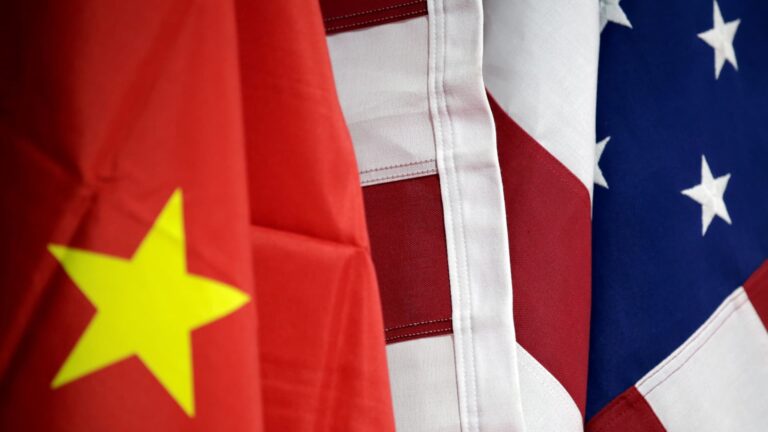Relations between Washington and Beijing are at their lowest in decades amid disputes over trade, technology and human rights, as well as an increasingly aggressive Chinese stance over its territorial claims, including in the autonomous region of Taiwan and the South China Sea.
Jason Lee | Reuters
BEIJING — U.S. presidential candidate Donald Trump’s new running mate, J.D. Vance, took a tough stance against China in his first speech since being elected earlier this week.
“Together we will protect the wages of American workers and stop the Chinese Communist Party from building a middle class at the expense of the American people,” Vance said on the third night of the Republican National Convention.
He also called for more factories to be built in the United States and limits on foreign workers, but did not mention specific actions.
Vance, a former Trump critic who rose to fame with his book “Hillbilly Elegy,” a first-hand account of the impact of manufacturing offshoring on the U.S. economy, is now an Ohio senator who introduced legislation in September that aims to promote U.S.-made gasoline and hybrid cars and end subsidies for electric vehicles.
The Communist Party is placing increasing emphasis on developing advanced manufacturing and said one of its goals by 2035 is to “significantly increase the proportion of middle-income people in the total population.”

China has a population of 1.4 billion, more than four times that of the United States’ 336.7 million. McKinsey predicts that the number of upper-middle- and high-income households in China could reach 200 million next year.
But on a per capita basis, China is still much poorer than the United States.
According to the National Bureau of Statistics, the per capita disposable income of China’s middle-income class last year was 32,195 yuan ($4,436), slightly below the national average of 39,218 yuan. The bureau defined each income bracket by dividing all surveyed households equally into five groups: upper-middle-income, middle-income and lower-middle-income.
According to data from the Bureau of Economic Analysis, per capita disposable income across the U.S. has increased several-fold to $61,033 as of December.
Looking at the American middle class, the median income in 2022 was $106,100, according to the Pew Research Center.
But according to the Pew Research Center, the percentage of Americans who could be considered middle class fell from 61% in 1971 to 51% in 2023. The percentage of upper-income Americans increased slightly more than the percentage of lower-income Americans during this period, according to the survey.
In his speech, Vance criticized Wall Street and “cheap foreign goods” from China, which he also blamed for the fentanyl crisis.
China has expanded its role in global supply chains since joining the World Trade Organization in 2001, and many of the world’s largest companies depend on China’s low-cost manufacturing base for their supplies.
Trump has said he plans to raise tariffs on Chinese goods to 60% if he is re-elected in the fall. He raised tariffs on Chinese goods while in office nearly six years ago and the Biden administration is keeping them in place.
Vance told Fox News earlier this week that China, not the war in Ukraine, is the “real problem” and “biggest threat” to the US.
Asked about Vance’s comments, Chinese Foreign Ministry spokesman Lin Jian said at a regular press briefing on Tuesday that “we have always opposed making China an issue in the U.S. elections.”
—CNBC’s Laura Kolodny contributed to this reportt.

